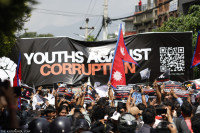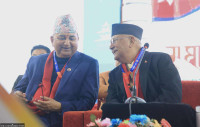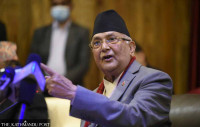Opinion
Rain drain
Relief efforts for flood victims have been deployed faster than they were during the 2015 earthquake; the Home Ministry has announced the deployment of more than 26,000 relief personnel, 8,000 of which are trained security forces.
Relief efforts for flood victims have been deployed faster than they were during the 2015 earthquake; the Home Ministry has announced the deployment of more than 26,000 relief personnel, 8,000 of which are trained security forces. It is also amazing to witness the resurgence of the zeal of private volunteers in collecting and distributing relief materials; this zeal was very much in evidence during the 2015 earthquake as well. However, we should be wary of repeating some patterns of relief work that emerged during the 2015 earthquake.
As was the case after the 2015 earthquake, the delivery of effective and efficient relief has once again been hampered by a lack of coordination between different arms of the government. There are allegations that, had the Home Ministry read early warning signs of weather conditions from the Department of Meteorology, helicopters and relief items could have been placed in strategic locations near flood hit areas before the weather worsened. That the government is struggling to coordinate different arms under one single umbrella shows the obvious shortfalls in the current manner in which information is being distributed. At a time when the government itself is suffering from a lack of coordination and information distribution, it is difficult to see how private volunteers could get adequate details to stage safe and effective relief operations. The government agencies, including the ones at the local level, should try to make the most of the altruistic zeal of private volunteers who want to assist the flood victims.
One aspect of private relief work that could, however, prove detrimental in the long run is the lack of understanding of local socio-economic and socio-cultural issues when sending out relief items. For example, people in urban areas and places abroad wouldn’t know the dietary habits in rural Nepal; they also wouldn’t know that most villagers can’t economically sustain the use of items such as sanitary pads in the long run after getting used to them through donations. One way to mitigate the disruption of local dynamics is to work through the Chief District Officers and local community organisations in order to understand the needs and dynamics of a particular area.
This is where the role of a proactive government comes in. It can give impetus to the slow pace of relief work by coordinating NGOs, INGOs and private volunteers. Citizens are under the belief that the government is allegedly monopolising relief distribution; they have not been well-informed of the government’s true intention, which is to try to get volunteers to work with CDOs and prevent a reoccurrence of the mistakes from 2015. Now the onus lies on the government to come out with a clear cut message to both the public and policy makers that help is welcome from all willing parties; there is also an urgent need for the government to conduct a post-disaster needs assessment to inform private volunteers where and how their help is needed.




 12.12°C Kathmandu
12.12°C Kathmandu









